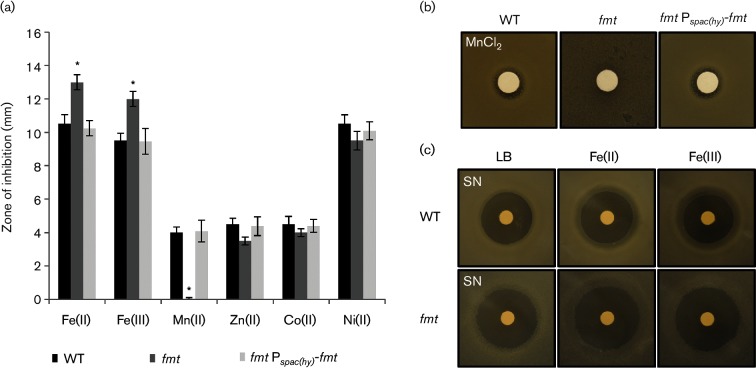Fig. 3.
An fmt mutant is sensitive to iron and has an increased resistance to manganese. (a) The sensitivity of WT (CU1065, black bars), an isogenic fmt :: kan mutant (HB21006, dark grey bars) and an fmt Pspac(hy)-fmt complemented strain (HB21016, light grey bars) to metal ion stress as monitored using a disc diffusion assay. The results are expressed as the diameter of the inhibition zone (mm) minus the diameter of the filter paper disc (6.5 mm). The mean±se from at least three biological replicates is reported. Significant differences from WT and fmt mutant as determined by two-tailed t-test are indicated: *P<0.01. The discs were spotted with 10 µl of 1 M FeSO4, 1M FeCl3, 100 mM MnCl2, 100 mM ZnCl2, 100 mM CoCl2 and 100 mM NiCl2 separately. (b) An fmt mutant is more resistant to Mn(II) intoxication than WT. Representative photographs (from three replicates) of a disc diffusion assay with WT, fmt and fmt Pspac(hy)-fmt strains on LB plates containing a disc spotted with 10 µl of 100 mM MnCl2. (c) An fmt null mutant displays increased sensitivity to streptonigrin (SN). Representative photographs (from three replicates) of a disc diffusion assay with WT, fmt and fmt Pspac(hy)-fmt strains on LB plates containing either no supplement, 100 µM FeSO4 or FeCl3. Each disc was spotted with 5 µl of 5 mg ml−1 (25 µg) SN.

